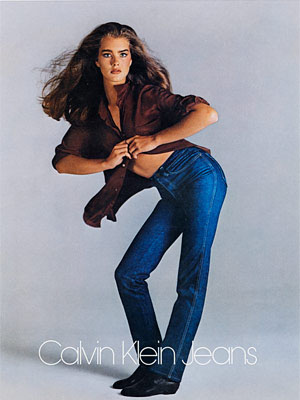
|
|||||||

Calvin Klein has struggled with keeping its sexual ideas hidden for many years. In the 1980s cK hired Brooke Shields, a 15-year old at the time, to pose for their jean line ads in a provocative manner. This proved to cause immense amount of controversy in the media because of the manner in which cK choose to present the ad with Brooke slipping into her cK jeans and saying that "nothing came between her and her Calvin's" (Reichert 2001). Advertisement proved to be a key place for cK to make a profit off their jean line. Once cK had become the fastest and most successful line of jeans, cK saw that anything they published would be seen by and influence their target consumer (Marsh 53). Even today, "Calvin Klein produces some of the most recognizable and memorable ads each year, resulting in annual retail sales of over $5 billion"(Reichert 2003, 33). This pushed cK to break from the conventional publications that were much more conservative and stick to the "sex sells" appeal.
Within this "sex sells" appeal there have been numerous critiques on the different forms of sexy ads (Reichert 2003, 33). Tom Reichert describes in his book, The Erotic History of Advertising, that "sex in advertising is often characterized as attractive models in stages of undress, models displayed or posing decoratively, or models engaging in suggestive behavior, either alone or with others. In addition, advertising also employs sexual double entendre, innuendo, subliminal sexual imagery, and sex-related promises. These forms of sexual content and imagery serve to provoke consumer' sexual interest [...]" (33). For these reasons, it is understandable that cK took the advantage of consumer interests and directed their advertisements towards a risque, sexy subject. In this visual and discursive semiotic analysis of Calvin Klein ads, we will see just how risque and sexy cK took their subject and how consumer culture has been changed to see nudity and sex as normal for profit.
a class taught by Bob Bednar in the Communication Studies Department at Southwestern University